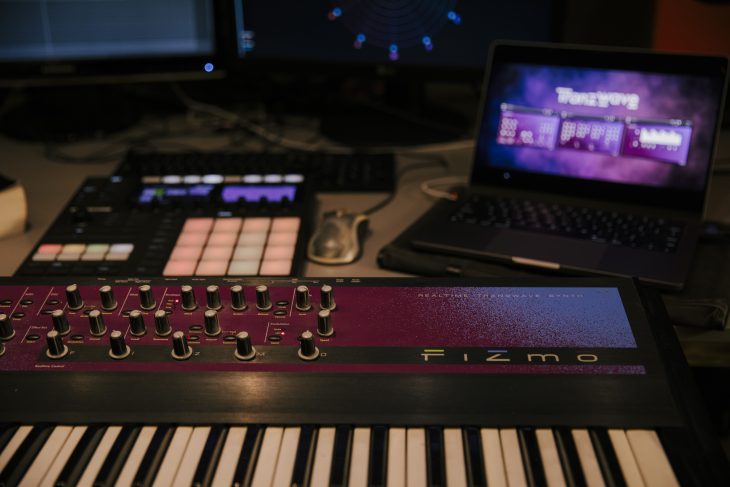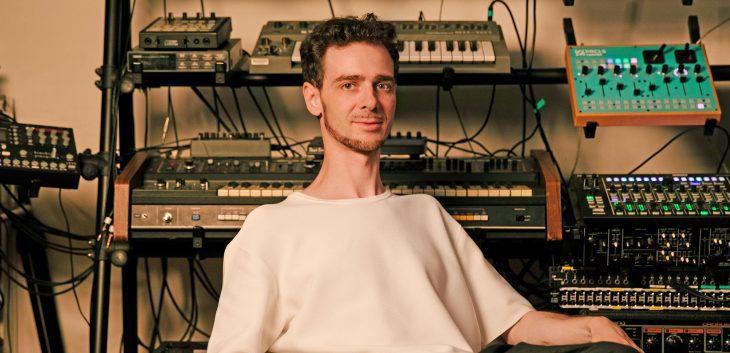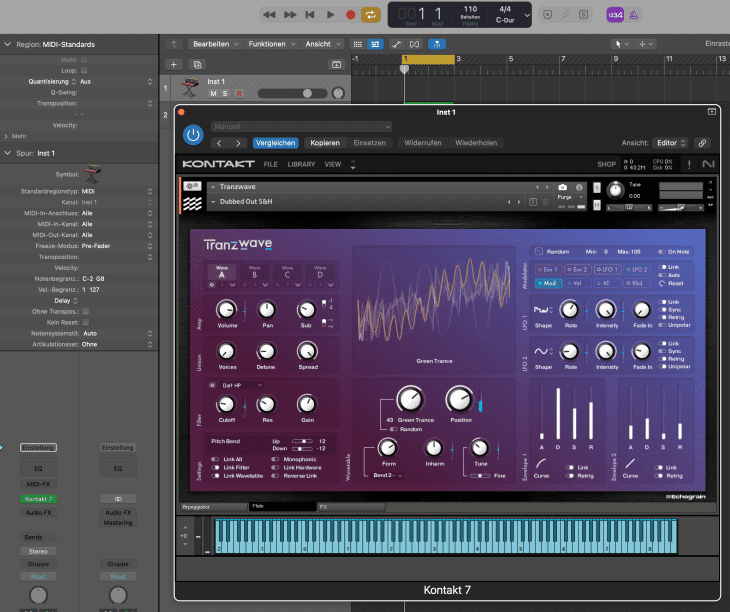The developer behind the Fizmo plugin
February 3, 2024

Interview with Gerhard Funabiki-Senz about the Echograin Tranzwave plugin
A few days ago we introduced and tested the Tranzwave plugin by Gerhard Funabiki-Senz. We will now follow up with an interview to introduce you to the friendly programmer and synthesizer enthusiast. I listen.
run out:
How did you decide to turn your Ensoniq Fizmo into a plug-in?
Gerhard:
The project was created during the pandemic. A friend lent me the Vismo. Since I'm constantly moving between Vienna and Tokyo and therefore can't take my instrument tools with me, I started working on creating sample instruments. At first I thought of just sampling the preset patches and tried the autosampler based on Max Msp and then bought Sample Robot. This made it easy to create sample instruments.
I was then interested to see if it would be possible to experiment with wavetables myself in order to get more creative possibilities for sound design. On the Fizmo itself, it's never been easier to access pure wavetables and use them as a starting point for your own corrections. To date, there is no Fizmo plug-in that allows direct manipulation of Transwaves. So, I wanted to make a tool that simplifies Fizmo and brings wavetables to the forefront.
run out:
What makes Fizmo so special?
Gerhard:
The Fizmo is a very complex synthesizer, equipped with an impressive array of modulation options and eight waveable oscillators. These features make it possible to create very complex audio clips. However, the unintuitive user interface, which makes the synthesizer difficult to understand and operate, especially for beginners, has prevented the Fizmo from commercial success. Without an external editor like Fauxmo, programming a synthesizer is quite a challenge.
But at the same time it has the five Fizmo Macro handles. This makes it a compound in which “happy accidents” can often occur. It's a boat full of surprises.
run out:
How difficult is Tranzwave to program?
Gerhard:
For me, this project motivated me to get more involved with the Kontakt scripting language and the Kontakt Sampler tool itself. I had no programming background at all, so it took me a while to understand the basic concepts. The scripting language itself is not very complex, but mastering the intricacies was quite difficult. I paid special attention to the ease of use and mapping of the machine controller.
Interface design was a big part of my work, as I worked with interface designer Deniz Örs. There seems to be a current trend towards over-simplifying interfaces so as not to overwhelm users. I was aiming for a balanced approach. The interface should be intuitive and unobtrusive, but at the same time make all controls quickly accessible in order to enhance complex sound design and encourage users to develop their own sounds. My goal was to create more than just a simple pre-made romper
run out:
Did you use the original Fizmo vibration modes?
Gerhard:
The heart of the Tranzwave is the Transwaves or Wavetables for the Ensoniq Fizmo. I tried to sample them as accurately as possible frame by frame and reconstruct the wavetables from them. This was a long and sometimes nerve-wracking process because it was necessary to cut the zero crossings with extreme precision in order to obtain a clean wave table. However, it was always a great joy when the wave tables were finally completed and could be put into operation. I still find it fascinating the variety of sounds you can get from relatively small samples. The Tranzwave synthesizer is only 86MB in size.
run out:
How close do you think the plug-in sounds to the original?
Gerhard:
In my opinion, the wavetables that make up the basic sound are very close to the original sound. Despite some small, unavoidable differences, Fizmo's signature sound is unmistakably present.
One difference is that the Fizmo has twice as many wave oscillators as the Tranzwave and uses flexible envelopes instead of ADSR envelopes. It also has unique effects that come from the Ensoniq DP/Pro that I wasn't able to recreate. That's why I prefer to introduce the Tranzwave as a Fizmo-inspired gadget – to avoid disappointment if someone expects an exact clone.
Thanks to the Kontakt motor, my Tranzwave synthesizer offers capabilities beyond those of the Fizmo. The effects that Tranzwave brings are diverse and include those that can be found in the original, even if they differ in timbre. The “Vintage” preset set that comes with the Tranzwave includes presets that are modeled after the Fizmo's factory presets.

Ensonic Vismo with Gerhard in the studio
run out
Do you already have a new project, a new compound in mind?
Gerhard:
Tranzwave marked the start of my company “Echograin”, which from now on will serve as a platform for such projects. My main focus currently is the Tranzwave synthesizer, which I want to keep updated. The next update will include 14 new effects and I plan to expand the range of preset sounds. I've currently reached my editing limit in Kontakt, which doesn't allow me to add more editing options at the moment – but I'm hoping more options will open up here in the future.
I'm definitely excited to develop more communication tools, especially when I encounter a gap that I find interesting. I'm lucky enough to always come across rare musical instruments and musical instruments in Japan. I'm also interested in the possibility of creating playable sample instruments through creative sampling combined with audio or MIDI effects. I'm also currently working on smaller Max for Live hardware and am considering offering sample packs with field recordings.
run out:
Thank you for the interview and we wish you much success with Tranzwave.
Gerhard:
Thank you very much! It was an honor!

“Social media evangelist. Baconaholic. Devoted reader. Twitter scholar. Avid coffee trailblazer.”









More Stories
Longest jets in the universe discovered – giant particle streams as long as 140 Milky Way galaxies in a row
New method reveals 307 supernova remnants
Snapchat is upping the ante on augmented reality glasses